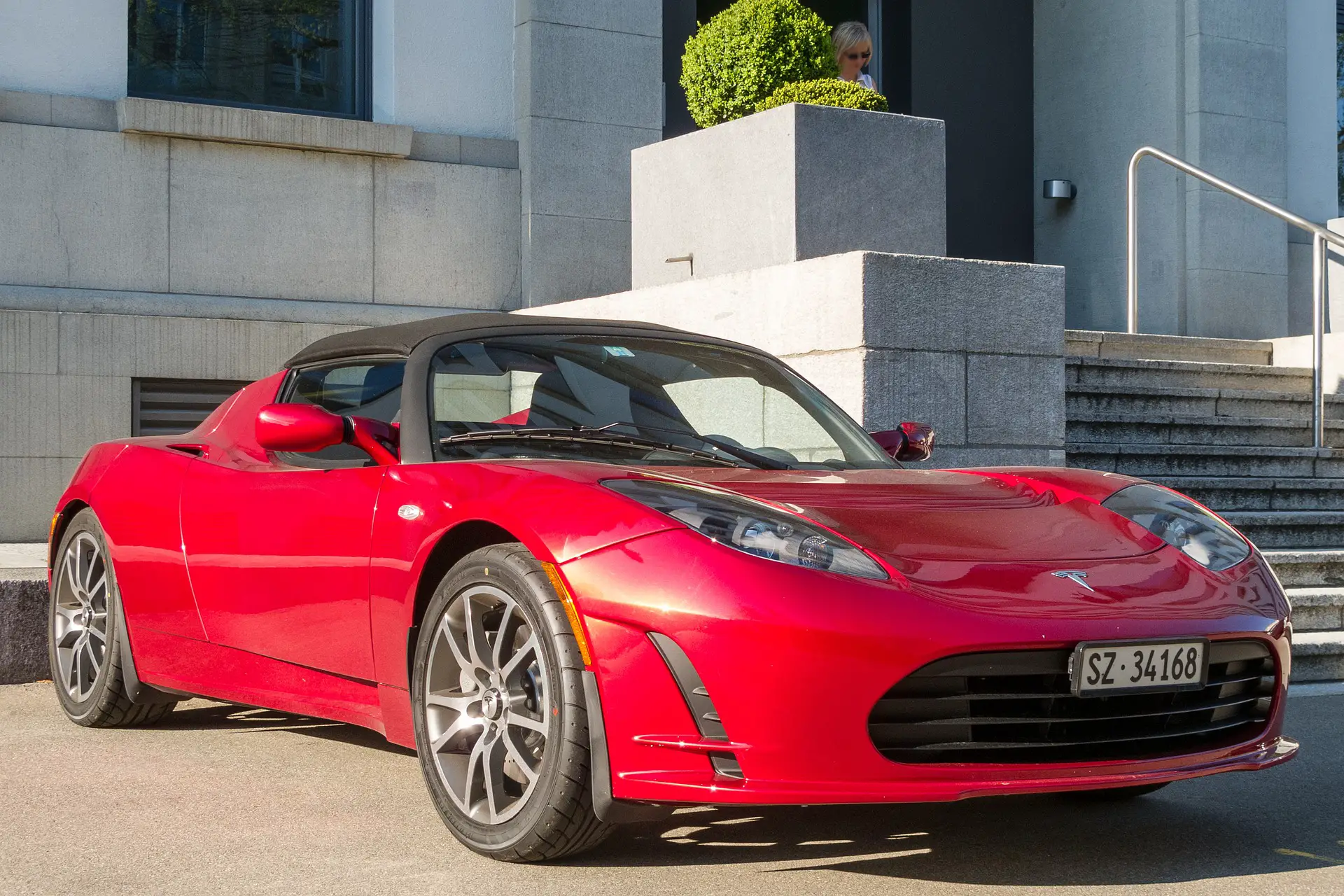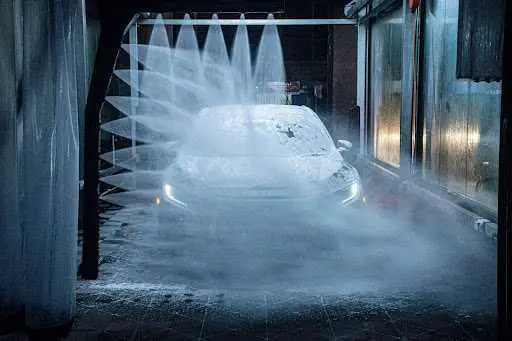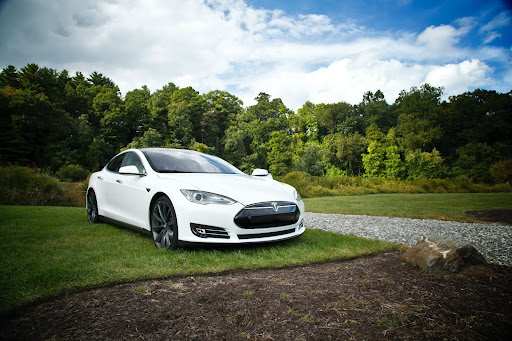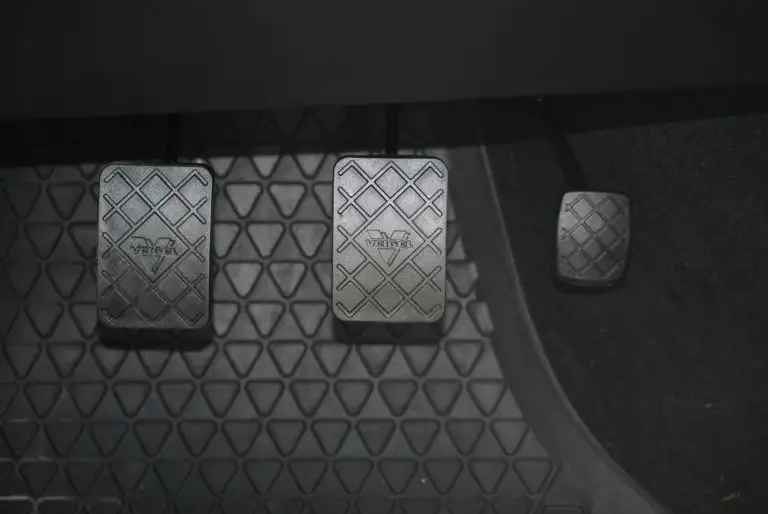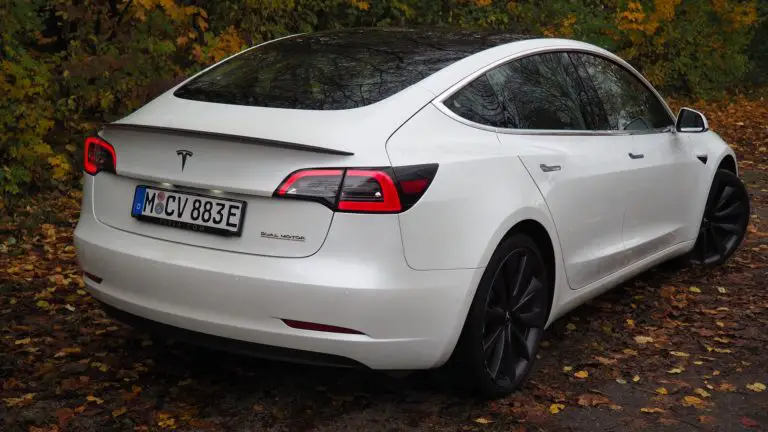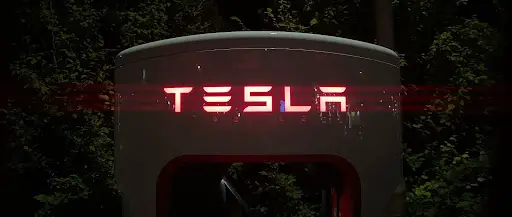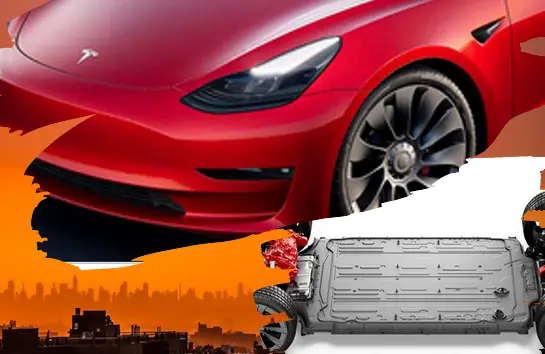How Many Cameras Does A Tesla Have?
In 1964, Isaac Asimov predicted that future cars would have robot brains. A short 60 years later and Tesla has fulfilled the prophecy and changed the paradigm of the entire motor industry. Tesla is more advanced and holds more data than any other manufacturer in terms of automation.
Tesla cars have eight cameras around the vehicle.
- Rearward Looking Side Cameras (2)
- Wide Forward Camera (1)
- Main Forward Camera (1)
- Narrow Forward Camera (1)
- Rear View Camera (1)
- Forward-Looking Side Cameras (2)
The cameras act as part of the autopilot and security system.
Auto manufacturers are either currently providing or are working towards five levels of automation. Most cars offer lane-keeping assistance and adaptive cruise control, close to the Level 1 metric. Tesla cars are further ahead.
Table of Contents
- What Do the Eight Tesla Cameras Do?
- The Tesla Cameras Are Designed for the Autopilot
- The Current State of Tesla Automation
- The Future of Tesla Automation
- Conclusion
What Do the Eight Tesla Cameras Do?
The cameras installed in the latest Tesla vehicles are as follows.
Camera 1 – Rearward Looking Side Cameras
All new Tesla vehicles have a side rear-facing camera installed on each side of the car. These cameras presently act as a blind-spot warning system.
When the driver selects the indicators to turn left or right, the rearward facing side cameras stream video to the central screen and warn the driver of any dangers.
When the driver has reverse gear selected, and the reversing camera activates, the reward side-looking cameras stream video, giving the driver a more expansive angled view behind the car.
Camera 2, 3, and 4 – Forward Cameras
Behind the windshield, the cars have three cameras mounted on the rear-view mirror.
They are designed to detect obstacles in front of the car. These cameras provide the following views.
- Short/wide vision with a 60m range of the front of the car. It has a 120° fisheye lens and has a range of 60m with a 150° field of view and detects traffic lights, obstacles cutting into the path of travel, and other objects at close range.
- Shorter, narrower focus vision has a 150° field of view at a range of 150m; this is the primary forward-facing camera.
- Focussed long-range vision has a 35° field of view at a range of 250m for detection of distant objects.
Camera 6 – Rear View Camera
This camera is installed in the rear and currently serves as a reversing camera.
Camera 7 – Forward-Looking Side Cameras
All new Tesla vehicles have a forward-looking side camera installed on each side of the car. With the present level of automation, these cameras are essentially redundant. When higher levels of automation are achieved, the systems will use them more. At the moment, they do monitor vehicles in the adjoining lanes.
When the vehicles achieve higher levels of automation, these cameras will serve an even more critical function.
Tesla Cameras Enable Sentry Mode
Tesla has the unique ability to record events that occur around the vehicle.
From a security standpoint, they can obtain visuals of perpetrators who may try to interfere with the vehicle and anyone, or thing, damaging it.
With the latest security upgrade, the Tesla becomes a 360-degree complete view security camera that allows live feeds to a remote device and provides the ability to remotely “talk” to anyone around the car.
These features also enable the cameras to provide a “black box” recording capability. Just as an aircraft’s black box (a red box) records all the parameters before an incident, so do the Tesla cameras.
If an accident occurs, there is a visual recording of the incident.
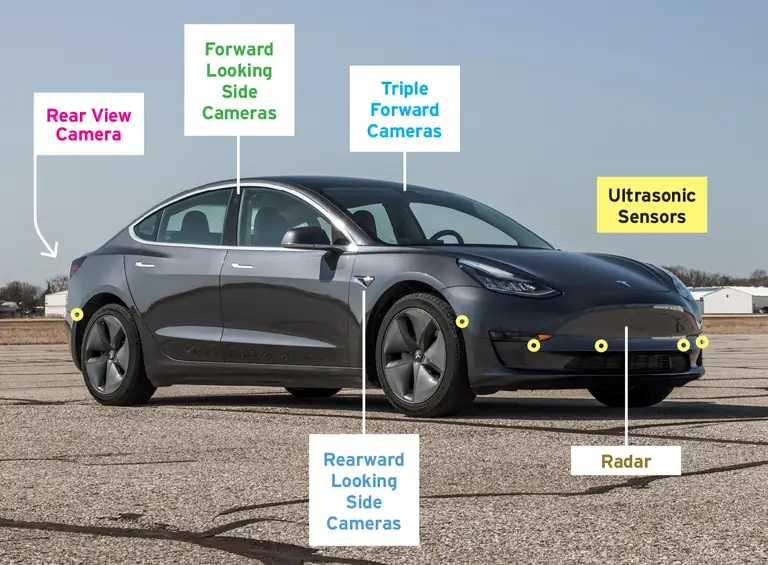
The Tesla Cameras Are Designed for the Autopilot
The Tesla cameras are designed as integral components of the current and future automation systems.
The following table defines the capabilities of vehicle automation systems.
- Level 0 _ No Automation
- Level 1 _ Driver Assistance (the driver can delegate either steering or braking)
- Level 2 _ Partial Automation (the system provides more automation.
- Level 3 _ Conditional Automation (The system controls the car on defined routes)
- Level 4 _ High Automation (The driver can transfer complete control to the system)
- Level 5 _ Full Automation
Levels 0- 2 require the driver to remain in overall system control.
Level 3 allows the driver to be inattentive while driving on specific routes.
Level 4, the computer can fully control the vehicle; however, the driver can take over at any time.
Level 5 Is a fully automated system and does not need a driver under any circumstance.
The Current State of Tesla Automation
Tesla cars are currently licensed to provide Level 2 autopilot assistance. It means that the Tesla requires the driver to remain seated in the driver seat, and whose hands must hold the steering wheel and be ready to take control at any time.
The Tesla systems are already much more advanced than any other autonomous driving system. While the regulators require Tesla drivers to retain overall control of the vehicle, the systems require less human driver intervention than other systems.
Statistics also prove that the Tesla autopilot responds more quickly with better avoiding decisions than its human counterparts.
With the latest Tesla models, the autopilot hardware suite consists of
- Eight cameras
- One radar
- ultrasonic sensors
- A new supercomputer
These devices will support “Tesla Vision’s” end-to-end image processing software and neural net.
Being able to provide a 360-degree full visual view of the field around the car is necessary to achieve the goal of level 5 automation.
The Future of Tesla Automation
With the latest production run of Tesla, a new computer has been installed.
The new computer is more than 40 times as powerful as the previous generation. It runs on a separate channel to the computers powering Tesla’s media unit and instrument cluster.
It means there will be no congestion or speed issues with the computer.
This computer runs the ‘Tesla Vision’ software, an end-to-end computer vision system built with NVIDIA.
“Tesla Vision” uses the car’s, radar cameras, and an onboard computer to assess the surroundings and control the current autopilot driver-assist system.
According to Tesla’s leader, Elon Musk, this is the precursor to the autopilot’s move through the levels of automation. In December 2021, Musk predicted that Tesla vehicles would achieve level 4 automation by December 2022.
Conclusion
There are eight cameras installed in Tesla motor cars, and they provide an entire 360 field of vision. The Tesla cameras are the unsung hero of these fantastic vehicles. Although the existing systems use them, they will step up to the plate in future levels of automation.
Elon Musk predicts that by the end of 2022, we will see fully automated Tesla vehicles piloting themselves with the drivers only keeping a passing interest in what surrounds them.
Amazon and the Amazon logo are trademarks of Amazon.com, Inc, or its affiliates.

